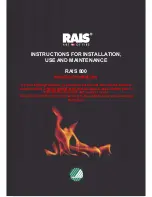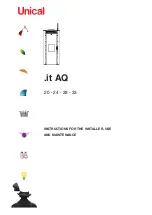
RevE 18/02/14
11
3.
Place the front ceramic matrix
into the fire so that it sits between the
middle ceramic matrix and the 2
front tray supports (Steel brackets at
the front of the tray) shown in
diagram 13.
Fitting the Loose Ceramic Coals
4.
The first row of coals consists
of 4 small coals and 4 large
coals. The first row of coals is
placed so that they sit on top of
the front and middle ceramic
matrices.
Starting with a large ‘diamond
shaped’ coal, place the front of
the coal on top of the left hand
support leg of the front
ceramic. The back of the coal
should rest on the middle ceramic.
Then take a small coal and place
the front of it in the first left notch on the
top of the front ceramic, the back of
the coal resting on the centre ceramic.
Continue this process, alternating the coal size until all the 8 coals are
placed as shown in Diagram 14.
Note!
Make sure that the coals do not fall down between the front and
middle matrices.
A gap must be left between the coals to allow the flames to pass
through.
Diagram 13
Diagram 14





































